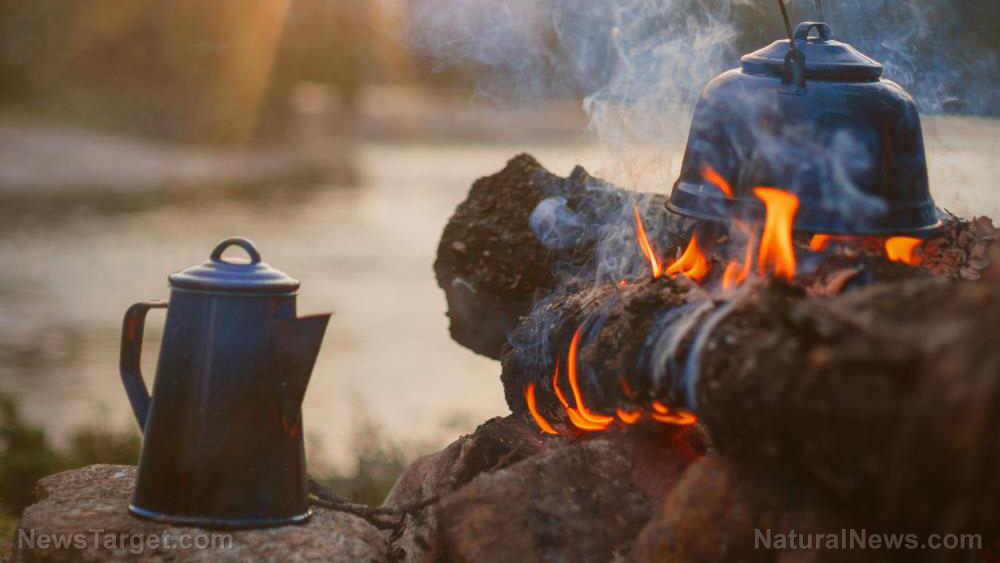
Advertisement
Firestarting is an essential survival skill for any prepper since you need fire to cook, boil water for drinking and sanitation, and as a source of heat. Before disaster strikes, it’s best to stock up on firewood and firestarting tools. But what happens if SHTF and all you’re left with is wet wood?
Knowing how to start a campfire using wet firewood is a handy skill to have if you’re planning to go camping for leisure or to bug out when SHTF. (h/t to ModernSurvivalBlog.com)
Firestarters
Ideally, you should know how to start a fire using basic techniques. It’s also incredibly helpful to have several firestarters in your everyday carry (EDC) kit or bug-out bag (BOB).
- BIC or Zippo lighters – Zippo lighters have a bigger flame, and you can set it down as the flame continues to burn, while a BIC lighter has to be held or pressed to stay lit. (Related: Top 12 NECESSARY items for survival when SHTF.)
- Firesteel or ferro rods – A firesteel or ferro (ferrocerium) rod can produce a lot of spark, all you need to do is scrape it with a knife.
- Matches – Store your matches in a watertight container.
- Road flare – This unusual tool is one of the easiest ways to start a fire with wet wood. Road flares burn very hotly, and they will burn for a fairly long time.
Tinder
Always pack some tinder in your BOB. Use tinder that is dry, light and is made of highly combustible material.
The tinder must catch the flame and burn long enough to ignite larger pieces of kindling.
- Cotton balls dipped in petroleum jelly – Dip some cotton balls in petroleum jelly, then store them in a small container or Ziploc bag. Petroleum jelly is flammable and will make the cotton balls burn longer.
- Tree bark – When getting tinder from fallen trees in the area, avoid rotten bark. The inside of most bark remains fairly dry, even in wet weather. Once you find a suitable branch, shave it and peel back the bark. Natural sources of tinder include paper (white) birch, red cedar, river birch and yellow (curly) birch.
- Wood shavings – Find a dead tree branch, then use your knife to slice or chip away small shavings into a pile. The inside of a dead branch is surprisingly dry.
Kindling
Kindling includes small twigs and branches.
Look for a dead tree that hasn’t fallen over yet and choose twigs that aren’t in contact with the ground. Break off branches that are close to the trunk and lowest to the ground since these are often the driest.
As you break the wood into small pieces, the ones with a nice dry “snap” can be used as kindling.
Branches and logs
Tinder and kindling will get your fire going, but you need larger pieces of dry wood to sustain heat and get it to burn quickly.
Similar to when you’re searching for dry kindling, you can also find dry logs by looking for dead trees that haven’t fallen yet. Knock it over with your hands or force your weight upon it with your shoulder, then drag the wood over to your designated fire area.
Burn the larger log-size wood as it is by burning it in half then pushing the logs back into the fire, or break them into pieces using an ax.
Building a fire
To build a fire, start with a fire bed. Arrange branches or chunks of bark from a dead tree to build a raised bed. This will keep the new fire off the wet ground.
Prepare the tinder and kindling piles. Light the tinder bundle, then adding pieces of kindling. Work your way up to larger pieces of wood.
Assemble a fire by prioritizing a “chimney” airflow structure.
- Layer the smallest, most combustible materials.
- Tent over your tinder using slightly bigger kindling in the shape of a tepee. Don’t pack the layers too tightly, and leave enough space for airflow.
- Light the tinder bundle, which should be in the center and bottom of your fire teepee. Get down to the fire’s level and gently blow on it to get the layers burning.
- Once you’ve started the fire with tinder, don’t rush to put more on the fire. Let it get going without smothering until the flames are strong enough to burn the rest of your firewood.
Before SHTF, learn essential survival skills like firestarting using wet wood.
Sources include:
Advertisement
Advertisements
















